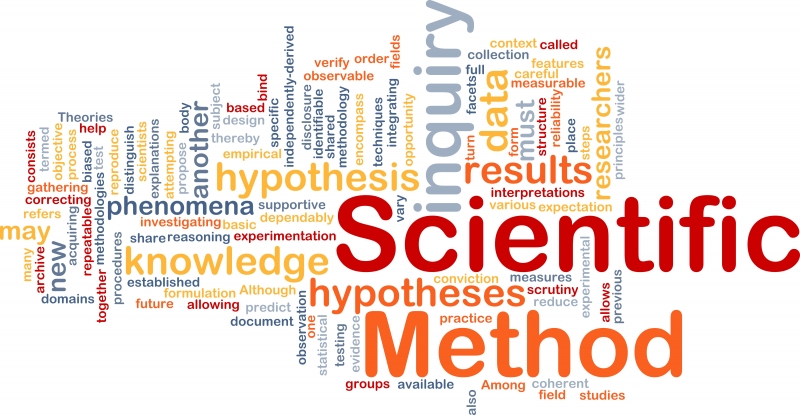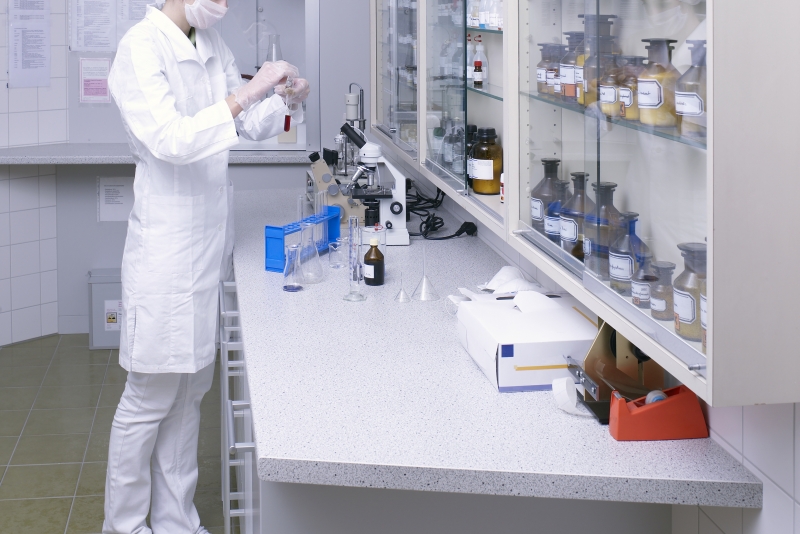The sun provides many benefits in our body. Through exposure to the sun our bodies absorb Vitamin D, melatonin and serotonin.  Vitamin D maintains bone health, protects against diabetes, heart disease, colon, breast and prostate cancer. Melatonin influences our sleep cycles, therefore regulating inflammation and improving our immune system. Serotonin influence mood changes which then determines our energy levels. Sometimes our busy schedules do not give us time to bask under the sun. However, sitting under the sun could lead to some negative side effects e.g. sunburn, eye diseases and skin cancer.Through the Parans’ system you can enjoy sunlight at the comfort of your home. The system provides a safe way to redirect sunlight to every single room in your home. SP4 a natural sunlight collector, is set up on the roof of the house. It’s in four different sizes to choose from depending on the number of rooms it will serve. The system follows the sun during the day and leads it into the house through fibre optic cables. It then spreads the light to all rooms in the house. You can do the lighting from different angles. There is the point light where you can power your home though light bulbs, ceiling light whereby the light will illuminate from the wall above the room or wall light which illuminates from the sides.The sunlight is safe because the system filters the IR and UV radiation and only transports the visible part of the sunlight. This ensures high quality sunlight which will not harm people in the house nor fade the interior. This ensures all rooms are well lit thus getting rid of harmful organisms and bacteria that can grow in the dark rooms of the house as sunlight is a natural disinfectant.Are you heliophile? If the answer is yes, you are probably smiling at the idea of directing more sunshine into your house and packing in the benefits that come with it. It might not be the case if you lean on the side of “creatures of the night”, or just avoid the sun to escape the harshness of UVR and UVA. Luckily, you can still eat your cake and have it. In this case, avoid direct sunshine and get to enjoy the good part of sunshine by installing the Paran’s system. From good health to saving money on lighting, and disinfecting your house, sunshine in the house presents more benefits than you can imagine. If you spend most of your days at the office – away from home, consider installing the system there as well. You will save money, conserve energy, and create a better working environment for yourself and your staff.
Vitamin D maintains bone health, protects against diabetes, heart disease, colon, breast and prostate cancer. Melatonin influences our sleep cycles, therefore regulating inflammation and improving our immune system. Serotonin influence mood changes which then determines our energy levels. Sometimes our busy schedules do not give us time to bask under the sun. However, sitting under the sun could lead to some negative side effects e.g. sunburn, eye diseases and skin cancer.Through the Parans’ system you can enjoy sunlight at the comfort of your home. The system provides a safe way to redirect sunlight to every single room in your home. SP4 a natural sunlight collector, is set up on the roof of the house. It’s in four different sizes to choose from depending on the number of rooms it will serve. The system follows the sun during the day and leads it into the house through fibre optic cables. It then spreads the light to all rooms in the house. You can do the lighting from different angles. There is the point light where you can power your home though light bulbs, ceiling light whereby the light will illuminate from the wall above the room or wall light which illuminates from the sides.The sunlight is safe because the system filters the IR and UV radiation and only transports the visible part of the sunlight. This ensures high quality sunlight which will not harm people in the house nor fade the interior. This ensures all rooms are well lit thus getting rid of harmful organisms and bacteria that can grow in the dark rooms of the house as sunlight is a natural disinfectant.Are you heliophile? If the answer is yes, you are probably smiling at the idea of directing more sunshine into your house and packing in the benefits that come with it. It might not be the case if you lean on the side of “creatures of the night”, or just avoid the sun to escape the harshness of UVR and UVA. Luckily, you can still eat your cake and have it. In this case, avoid direct sunshine and get to enjoy the good part of sunshine by installing the Paran’s system. From good health to saving money on lighting, and disinfecting your house, sunshine in the house presents more benefits than you can imagine. If you spend most of your days at the office – away from home, consider installing the system there as well. You will save money, conserve energy, and create a better working environment for yourself and your staff.
Category Archives: Science
The Science Behind an Adrenaline Rush
An adrenaline rush, associated with the ‘fight or flight’ response, is how the body reacts to a situation which is stressful, traumatic, or dangerous. The idea behind an adrenaline rush is survival as your body prepares to put in the effort necessary to ensure you escape danger unharmed, but how does it actually work? 
What’s in an adrenaline rush
The process involves a number of different responses within the body coming together. First, a dangerous situation is processed by the amygdala, the part of the brain which handles information about emotions. The information is then sent to the hypothalamus, the part of the brain which controls the rest of the body through the nervous system. Finally, a signal is sent to the pituitary glands which release chemical signals to stimulate the production of adrenaline in the adrenal glands.
What this means for your body
With the surge of adrenaline, the liver is stimulated into producing glucose which results in more energy. Blood vessels contract and the heart beats faster which provides muscles with more oxygen and more energy. This is how in some situations it seems that people can muster superhuman strength to complete daring acts. As the nervous system is engaged in sending signals to keep you alive, it also means that most pain isn’t felt until well after the event.
What events cause this
A lot of activities create an adrenaline rush including things our brains understandably considers to be dangerous such as skydiving or watching a scary movie. Situations like an interview or an opportunity to win a bet, however, also cause this response as your brain makes you literally give 110%. Some disorders can create bursts of adrenaline, an issue since lots of adrenaline can cause circulatory problems. Certain individuals can also get addicted to the dopamine rush which comes with it leading them to seek out thrills, a problem which also has underlying genetic causes.
The Science of Luck
One of the most intriguing findings discussed in Professor Richard Wiseman’s 2003 book “The Luck Factor” is that some people genuinely seem to be luckier than others. A person’s state of mind appears to have a measurable influence upon the outcome of events. This seems to run contrary to conventional logic.  Probability theory indicates that the likelihood of an event either happening or not happening is determined by purely mechanistic factors, and yet Wiseman is adamant that luck is not merely a matter of arbitrary mathematics. He argues that a person’s attitude can actually influence how lucky they are in life. At first glance, this may seem like the unscientific ramblings of a new age guru, but Wiseman is a respected academic. As Professor of Parapsychology at the University of Hertfordshire, he is well-known for his sceptical approach in dealing with spurious claims of the paranormal. The reality, according to Wiseman, is that people who maintain a positive outlook on life tend to seize more opportunities and take more calculated risks, which means that they are more frequently in a position to capitalise on strokes of good fortune which other, more negatively-minded people would either shy away from or simply fail to observe. Wiseman’s research has shown that, over time, people who consider themselves unlucky tend to have a correspondingly negative outlook on life. They may avoid applying for their dream job or approaching a potential romantic partner, simply because they believe, subconsciously, that they don’t deserve to achieve their desired outcome. In addition, people who feel ‘unlucky’ exhibit more anxiety, and their stress levels tend to have a detrimental effect upon their ability to concentrate and think clearly. This in turn can create a vicious circle of neurosis and depression. When many people think about the concept of manipulating luck, they tend to associate it with games of chance. The fantasy of a hitting a lucky streak at the roulette tables is deeply enshrined within the public imagination. Whether or not you ascribe anything to strategy in games, luck clearly plays the most important role here. Could Wiseman’s ideas be applied to gaining an edge in casino games? It’s certainly an intriguing question to ponder. From a purely psychological perspective, a case could be made for the idea that a player who embarks upon a game of chance in a positive, optimistic frame of mind is more inclined to play in a cool, dispassionate way. Such players are more likely to stick to relatively sensible staking strategies and avoid the temptation to go “on tilt”, whereas players who approach the game in a negative or emotionally fragile state of mind are more likely to lose control and start playing recklessly. Perhaps individuals who believe themselves to be habitually unlucky are more prone to start chasing losses with ever more risky bets, in which case a random losing streak could be potentially devastating to their finances. If this is the case, it could be argued that the way in which a person self-identifies as either ‘lucky’ or ‘unlucky’ could quite feasibly become a self-fulfilling prophecy.
Probability theory indicates that the likelihood of an event either happening or not happening is determined by purely mechanistic factors, and yet Wiseman is adamant that luck is not merely a matter of arbitrary mathematics. He argues that a person’s attitude can actually influence how lucky they are in life. At first glance, this may seem like the unscientific ramblings of a new age guru, but Wiseman is a respected academic. As Professor of Parapsychology at the University of Hertfordshire, he is well-known for his sceptical approach in dealing with spurious claims of the paranormal. The reality, according to Wiseman, is that people who maintain a positive outlook on life tend to seize more opportunities and take more calculated risks, which means that they are more frequently in a position to capitalise on strokes of good fortune which other, more negatively-minded people would either shy away from or simply fail to observe. Wiseman’s research has shown that, over time, people who consider themselves unlucky tend to have a correspondingly negative outlook on life. They may avoid applying for their dream job or approaching a potential romantic partner, simply because they believe, subconsciously, that they don’t deserve to achieve their desired outcome. In addition, people who feel ‘unlucky’ exhibit more anxiety, and their stress levels tend to have a detrimental effect upon their ability to concentrate and think clearly. This in turn can create a vicious circle of neurosis and depression. When many people think about the concept of manipulating luck, they tend to associate it with games of chance. The fantasy of a hitting a lucky streak at the roulette tables is deeply enshrined within the public imagination. Whether or not you ascribe anything to strategy in games, luck clearly plays the most important role here. Could Wiseman’s ideas be applied to gaining an edge in casino games? It’s certainly an intriguing question to ponder. From a purely psychological perspective, a case could be made for the idea that a player who embarks upon a game of chance in a positive, optimistic frame of mind is more inclined to play in a cool, dispassionate way. Such players are more likely to stick to relatively sensible staking strategies and avoid the temptation to go “on tilt”, whereas players who approach the game in a negative or emotionally fragile state of mind are more likely to lose control and start playing recklessly. Perhaps individuals who believe themselves to be habitually unlucky are more prone to start chasing losses with ever more risky bets, in which case a random losing streak could be potentially devastating to their finances. If this is the case, it could be argued that the way in which a person self-identifies as either ‘lucky’ or ‘unlucky’ could quite feasibly become a self-fulfilling prophecy.
The science behind our need for natural light
We are all aware of the importance of the sun and how it provides us with a boost. This boost is likely due to vitamin D in our bodies. While many people may be aware of the fact the sun helps us in absorbing vitamin D, most people will not be aware of how this occurs or what benefits this process provides. Vitamin D can be found in a number of foods such as fatty fish and egg yolk; however the vast majority of the vitamin comes from our own bodies. Within our skin is a steroid called 7-Dehydrocholesterol, When UV rays from the sun hit our skin, bonds are broken in this steroid creating cholecalciferol or Vitamin D3. The liver and kidneys then proceed to convert this into the final form called calcitriol.Calcitriol or Vitamin D is essential for healthy bones. Vitamin D allows for the absorption of calcium and the management of calcium levels in the blood and bones. This vitamin is believed to aid in a number of bodily functions such as helping the immune system to fight infection, healthy muscle function and healthy circulation.Using innovative technology and design, Parans offers sunlight for indoor environments such as the office or home. This technology is an essential component in any office space as it provides natural light aiding in productivity. According to studies, workers in well lit environments were less prone to symptoms of headaches and eye strain. One of the key factors in a good workplace is productivity. An office environment with plenty of light can be seen to have employees with increased focus and efficiency due to higher vitamin D levels. Productivity and levels of vitamin D have a link in sleep. The body possesses a rhythm integral to coordination of several functions, collectively known as the circadian rhythm. With the emergence of so much unnatural light in phones and TV screens there is a potential to throw this rhythm off. By sleeping in a room with access to windows this rhythm can be realigned ensuring our sleep is improved.
Vitamin D can be found in a number of foods such as fatty fish and egg yolk; however the vast majority of the vitamin comes from our own bodies. Within our skin is a steroid called 7-Dehydrocholesterol, When UV rays from the sun hit our skin, bonds are broken in this steroid creating cholecalciferol or Vitamin D3. The liver and kidneys then proceed to convert this into the final form called calcitriol.Calcitriol or Vitamin D is essential for healthy bones. Vitamin D allows for the absorption of calcium and the management of calcium levels in the blood and bones. This vitamin is believed to aid in a number of bodily functions such as helping the immune system to fight infection, healthy muscle function and healthy circulation.Using innovative technology and design, Parans offers sunlight for indoor environments such as the office or home. This technology is an essential component in any office space as it provides natural light aiding in productivity. According to studies, workers in well lit environments were less prone to symptoms of headaches and eye strain. One of the key factors in a good workplace is productivity. An office environment with plenty of light can be seen to have employees with increased focus and efficiency due to higher vitamin D levels. Productivity and levels of vitamin D have a link in sleep. The body possesses a rhythm integral to coordination of several functions, collectively known as the circadian rhythm. With the emergence of so much unnatural light in phones and TV screens there is a potential to throw this rhythm off. By sleeping in a room with access to windows this rhythm can be realigned ensuring our sleep is improved.
The Science Behind Poker
There is a well-established maxim which states that poker is not, strictly speaking, a card game, but a game of ‘people reading’ which just happens to be played with cards. Unlike most games of chance, poker is winnable, primarily because of two factors: mathematics and psychology. Over time, poker rewards the most highly-skilled players and punishes weak, undisciplined players. Ultimately, the factors which determine who will win and who will lose in the long term can be viewed in strictly scientific terms. A decent grasp of mathematics helps a great deal. Knowing the odds of drawing a third card to match your pair, for instance, allows you to assess the risk-to-reward ratio. If the odds of success are slimmer than the current size of the pot divided by the amount you would need to stake to stay in the game at that point, then the only sensible move would be to fold. This is not a matter of opinion, luck or fate, but of cold, hard mathematics.The other crucial factor is psychology. The ability to read your opponents will give you a distinct advantage in determining the true strength of their hands. In face-to-face play, even the strongest players have ‘tells’: tiny tics and micro-expressions which give the game away when viewed by a skilled observer. The difficulty comes when trying to apply traditional methods to spot bluffs in online play. Body language is of no use online. As soon as you remove the visual element, it’s impossible to know whether your opponent has just narrowed his eyes or changed his posture, but there are other ways in which players give themselves away. Often, this has to do with the timing of their response, or a sudden variation in staking patterns.Many academic treatises have explored the psychology behind the perfect bluff, and whilst poker is always fundamentally a game of imperfect information, smart players are strongly advised to learn as much as they can about the art of spotting common giveaways in both online and offline play. In the ever-growing world of online poker, knowledge is power.
A decent grasp of mathematics helps a great deal. Knowing the odds of drawing a third card to match your pair, for instance, allows you to assess the risk-to-reward ratio. If the odds of success are slimmer than the current size of the pot divided by the amount you would need to stake to stay in the game at that point, then the only sensible move would be to fold. This is not a matter of opinion, luck or fate, but of cold, hard mathematics.The other crucial factor is psychology. The ability to read your opponents will give you a distinct advantage in determining the true strength of their hands. In face-to-face play, even the strongest players have ‘tells’: tiny tics and micro-expressions which give the game away when viewed by a skilled observer. The difficulty comes when trying to apply traditional methods to spot bluffs in online play. Body language is of no use online. As soon as you remove the visual element, it’s impossible to know whether your opponent has just narrowed his eyes or changed his posture, but there are other ways in which players give themselves away. Often, this has to do with the timing of their response, or a sudden variation in staking patterns.Many academic treatises have explored the psychology behind the perfect bluff, and whilst poker is always fundamentally a game of imperfect information, smart players are strongly advised to learn as much as they can about the art of spotting common giveaways in both online and offline play. In the ever-growing world of online poker, knowledge is power.
Best online sources for science news
There’s never been a better time to get up to speed on news of the latest science developments as science reporting has become increasingly mainstream, mainly because of all the exciting science that’s happening these days. Here are some great resources: Conventional news sourcesMany of the places you’d expect to find news have special science desks – good ones are the BBC News Science & Environment page, New Yorker’s Science & Tech section and Huffington Post Science.Science-specific sitesThere are many of these, providing constantly updated coverage of all the news in science. Get started with sites like Science Daily, which focuses on research news, New Scientist, geared more to the general population, and of course Popular Science.PodcastsScience podcasts offer a really great source of news in a whole range of fascinating subjects from astrophysics to neuroscience, often with a huge dose of humour in the mix. Try Star Talk Radio, You Are Not So Smart, and This Week in Science.With websites like these to explore, as well as the host of fantastic science social media accounts you’ll find on Twitter, Facebook and Google+, you can stay abreast with all the marvellous new wonders of the universe being discovered in our fascinating age.
Conventional news sourcesMany of the places you’d expect to find news have special science desks – good ones are the BBC News Science & Environment page, New Yorker’s Science & Tech section and Huffington Post Science.Science-specific sitesThere are many of these, providing constantly updated coverage of all the news in science. Get started with sites like Science Daily, which focuses on research news, New Scientist, geared more to the general population, and of course Popular Science.PodcastsScience podcasts offer a really great source of news in a whole range of fascinating subjects from astrophysics to neuroscience, often with a huge dose of humour in the mix. Try Star Talk Radio, You Are Not So Smart, and This Week in Science.With websites like these to explore, as well as the host of fantastic science social media accounts you’ll find on Twitter, Facebook and Google+, you can stay abreast with all the marvellous new wonders of the universe being discovered in our fascinating age.
The Modern Scientific Method
The modern scientific method is the building block on which so much of modern world has been constructed. All the massive advances in computer science and communication technology that we have witnessed in the last few decades can be directly attributed to the use of the scientific method. Some would argue that the formulation of the modern scientific method is one of humanity’s greatest ever inventions; with it providing the key that unlocked so many more doors of progress, in a huge variety of fields, from biology and medicine, to quantum physics and space travel.As to who invented the modern scientific method, ancient Greek philosopher Aristotle certainly has a strong claim. While he and other Greek proto-scientists certainly contributed to the development of the method, particularly in their use of observation and measurement, their initial forays into science tend to lack the structure and precision of modern science.It would be a fairer assessment to say that much modern scientific method was first formulated by scholars in the medieval Muslim world. Between the 10th and the 14th centuries CE, scholars in the Islamic countries of the world first began to identify and use the fundamentals of modern scientific method.These fundamentals centre on seven basic principles, which shape the work of scientists today. These are:
Some would argue that the formulation of the modern scientific method is one of humanity’s greatest ever inventions; with it providing the key that unlocked so many more doors of progress, in a huge variety of fields, from biology and medicine, to quantum physics and space travel.As to who invented the modern scientific method, ancient Greek philosopher Aristotle certainly has a strong claim. While he and other Greek proto-scientists certainly contributed to the development of the method, particularly in their use of observation and measurement, their initial forays into science tend to lack the structure and precision of modern science.It would be a fairer assessment to say that much modern scientific method was first formulated by scholars in the medieval Muslim world. Between the 10th and the 14th centuries CE, scholars in the Islamic countries of the world first began to identify and use the fundamentals of modern scientific method.These fundamentals centre on seven basic principles, which shape the work of scientists today. These are:
- Making an observation of a phenomenon of the natural world.
- Making a clear statement of a definite problem.
- Formulating a sound hypothesis.
- Testing the ideas behind the hypothesis through properly designed experiments.
- Recording, assessing and analysing the results of those experiments.
- Interpreting and presenting the data of those experiments in a coherent and scientifically sound way.
- Finally, publishing the findings of this process of observation, experimentation and analysis.
These look like an uncomplicated set of steps, but their simple nature is deceptive. These seven stages have formed the basis for the bast majority of successful experiments, which in turn has led to huge breakthroughs in every area of human life.Whether you enjoy drinking soda pop, use an asthma inhaler, or drive a car, all the technology that you are enjoying can be traced to someone, somewhere, using the scientific method.
The Biggest Modern Breakthroughs in Medical Research
The history of medicine reaches as far back as the ancient period, yet just a few major discoveries stand out in the public’s mind. From the first heart transplant through to the discovery of antibiotics, medicine has had a lot to offer over the years. While older discoveries are certainly tantalising, there are modern versions that have a lot to offer too. The HPV VaccineAs one of the most aggressive female cancers, cervical cancer kills millions of women each year. While vaccine therapies have been explored for decades in relation to cancer, finding one that works has proven to be a challenge for scientists. Today, girls and women aged between 13 and 26 can access a preventative vaccine that significantly reduces their risk of HPV. Not only will this benefit women in the developed world, access in the developing world can significantly enhance women’s health there. Fecal TransplantsOn the face of things, fecal transplants may sound a little gross. However, when it comes to tackling some of the world’s most stubborn bacteria, they can save lives. Clostridium difficile is a violent pathogen that primarily causes infections in a healthcare setting. Thanks to its biological makeup, it’s incredibly hard to tackle. Today, patients can receive fecal transplants that have a 90 percent cure rate, allowing them to get back to good health. The Use of Maggots to Battle MRSAIf you’ve ever worked in healthcare, you’ll already know how MRSA strikes fear in the hearts of clinicians and patients alike. While antibiotics have acted as life savers during the 20th century, overuse has led to resistance amongst certain bacteria. Researchers at Swansea University in the UK have taken medicine back to basics by using maggots as a form of wound therapy. When maggots are applied to wounds, they secrete a substance patented as ‘Seraticin’, which is antibacterial, antifungal, and too overpowering for MRSA to resist. Fortunately for squeamish patients, researchers are now working towards bottling Seraticin so it can be used without maggots being present. Long Lasting Contraceptive MicrochipsUntil 2014, the longest acting contraceptive was the copper IUD, which can give women an impressive chance of staying pregnancy free for 10 years. After more than a decade of scientific development, it looks as though the contraceptive microchip is ready to take the copper IUD’s crown. Not only does it release 30mg of levonorgestrel on a daily basis, it’s possible to turn it on and off at will. As women return to their fertile potential almost immediately after stopping the hormones, it offers contraceptive flexibility that might remain unparalleled for some time now. HIV CocktailsAfter gripping the world with fear in the 1980s and 1990s, HIV is now a condition that can be relatively well controlled. In the last year, scientists have pin pointed combinations of antiretroviral drugs that help patients fight off side-effects, reach their life expectancy, and reduce the risk of spread. Compared to the decade HIV first became evident, which saw slow and painful deaths, this is astounding progress.With science moving at a rapid pace, the world is sure to see further breakthroughs throughout the 21st century.
The HPV VaccineAs one of the most aggressive female cancers, cervical cancer kills millions of women each year. While vaccine therapies have been explored for decades in relation to cancer, finding one that works has proven to be a challenge for scientists. Today, girls and women aged between 13 and 26 can access a preventative vaccine that significantly reduces their risk of HPV. Not only will this benefit women in the developed world, access in the developing world can significantly enhance women’s health there. Fecal TransplantsOn the face of things, fecal transplants may sound a little gross. However, when it comes to tackling some of the world’s most stubborn bacteria, they can save lives. Clostridium difficile is a violent pathogen that primarily causes infections in a healthcare setting. Thanks to its biological makeup, it’s incredibly hard to tackle. Today, patients can receive fecal transplants that have a 90 percent cure rate, allowing them to get back to good health. The Use of Maggots to Battle MRSAIf you’ve ever worked in healthcare, you’ll already know how MRSA strikes fear in the hearts of clinicians and patients alike. While antibiotics have acted as life savers during the 20th century, overuse has led to resistance amongst certain bacteria. Researchers at Swansea University in the UK have taken medicine back to basics by using maggots as a form of wound therapy. When maggots are applied to wounds, they secrete a substance patented as ‘Seraticin’, which is antibacterial, antifungal, and too overpowering for MRSA to resist. Fortunately for squeamish patients, researchers are now working towards bottling Seraticin so it can be used without maggots being present. Long Lasting Contraceptive MicrochipsUntil 2014, the longest acting contraceptive was the copper IUD, which can give women an impressive chance of staying pregnancy free for 10 years. After more than a decade of scientific development, it looks as though the contraceptive microchip is ready to take the copper IUD’s crown. Not only does it release 30mg of levonorgestrel on a daily basis, it’s possible to turn it on and off at will. As women return to their fertile potential almost immediately after stopping the hormones, it offers contraceptive flexibility that might remain unparalleled for some time now. HIV CocktailsAfter gripping the world with fear in the 1980s and 1990s, HIV is now a condition that can be relatively well controlled. In the last year, scientists have pin pointed combinations of antiretroviral drugs that help patients fight off side-effects, reach their life expectancy, and reduce the risk of spread. Compared to the decade HIV first became evident, which saw slow and painful deaths, this is astounding progress.With science moving at a rapid pace, the world is sure to see further breakthroughs throughout the 21st century.